Buffalos Mating . . . Underwater!
That’s right, it’s mating season for buffalos . . . Buffalo SCULPINS that is!
Now that I’ve lured you to this posting with the procreation of a huge, shaggy terrestrial mammal on your mind . . . let me show you the spawn of this wondrous fish.
The Buffalo Sculpin – Enophrys bison – has earned the association with buffalo/bison due to the horn-like spine found on each gill plate (operculum). The species can be up to 37 cm long.
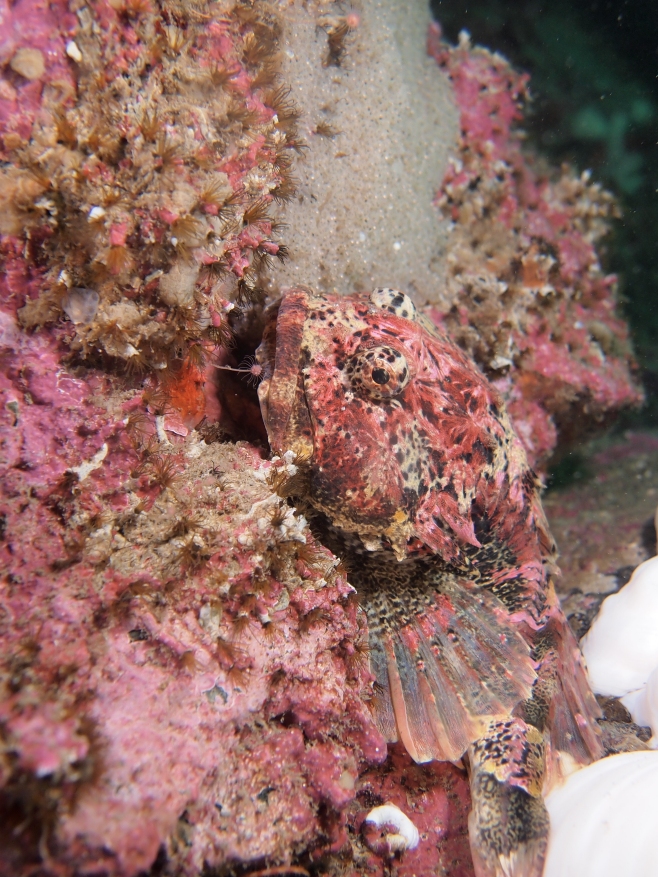
As is the case for many species in the sculpin family, male Buffalo Sculpins guard the eggs from predators. They also fan the fertilized eggs with their pectoral fins to aerate them and stop growth of algae / bacteria. Sometimes they guard the eggs laid by multiple females (see below for a male that appeared to be trying to guard EIGHT egg masses). When you consider that a female can lay between 19,000 and 32,000 eggs, the males have a lot of fertilizing and guarding work to do! Their guard duty lasts 5 to 6 weeks until the eggs hatch.
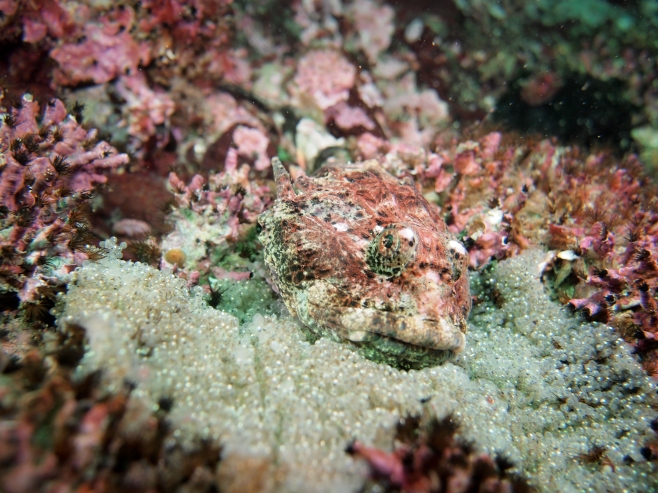
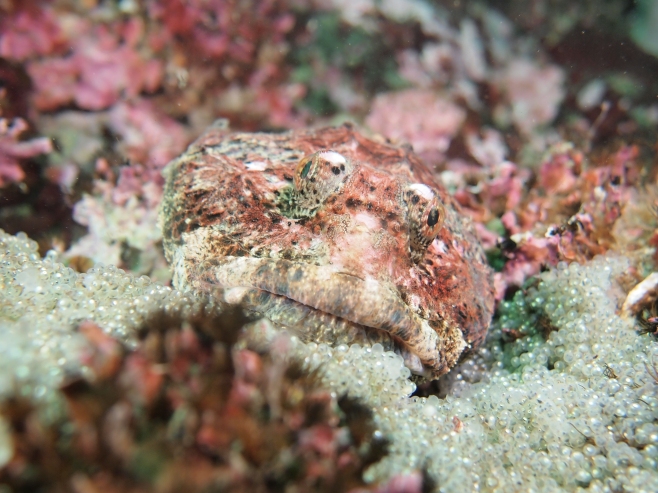
Many of the photos below show how you the males lie with their flat heads directly upon a cascade of eggs. The clusters of eggs laid in the spring allow me to find this incredibly camouflaged fish much more easily than I normally could. When I see a golden, orange or greenish shiny mass of eggs, I know a male Buffalo Sculpin has to be very near by. The bright colour of the eggs suggests that they might be toxic to many species, further protecting them from predation.
Very interestingly too, there is a species of fish known to parasitize on the care provided to the fertilized eggs by Buffalo Sculpins. Spinynose Sculpins (Asemichthys taylori) will lay their eggs on top of the Buffalo Sculpin eggs. The Spinynose Sculpin eggs will hatch faster and it is even possible that the presence of their eggs slows the development of the Buffalo Sculpin eggs. This “nesting parasitism”, is a “behavior previously unknown among marine fishes.” (Kent, Fisher, & Marliave, 2011).
As you can see, Buffalo Sculpins’ red, brown and pink colouration makes them very difficult to discern from the similarly brilliantly coloured life around them. They will remain absolutely still so as not to give away their presence. Their relative, the Red Irish Lord, has the same survival strategy. (See this previous blog item for photos and information on the Red Irish Lord.)
The camouflage, in addition to reducing the risk of predation by bigger fish and seals, allows the Buffalo Sculpin to be a very successful ambush hunter of shrimp, crabs, amphipods and small fish. It has been suggested that they eat mainly algae since this has so often been found in their gut but I am willing to bet that the algae ends up in their stomachs as a result of the Buffalo Sculpins grabbing prey ON the algae!
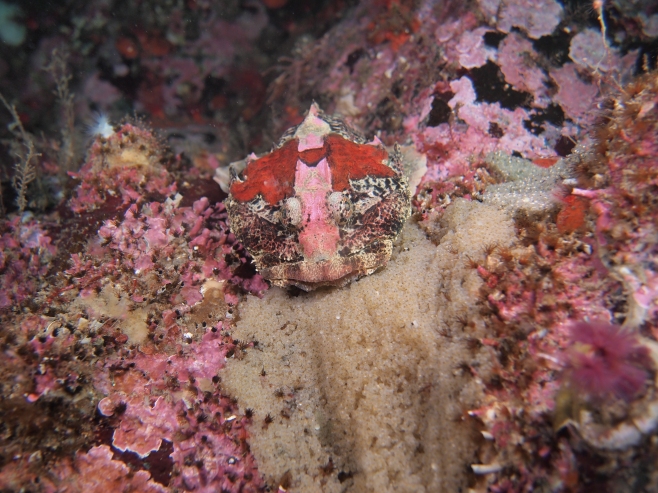
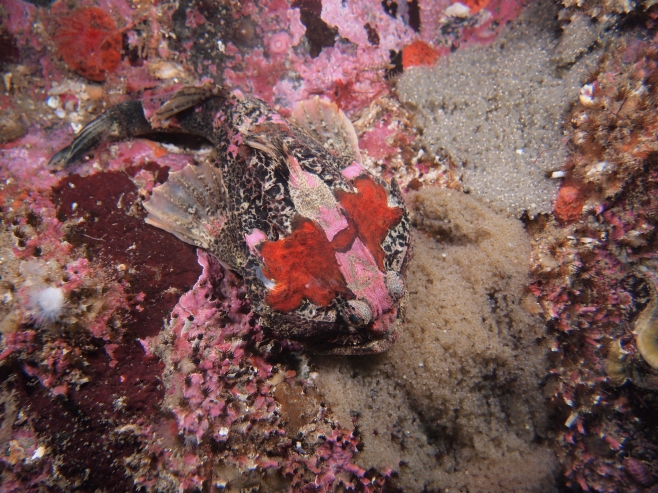
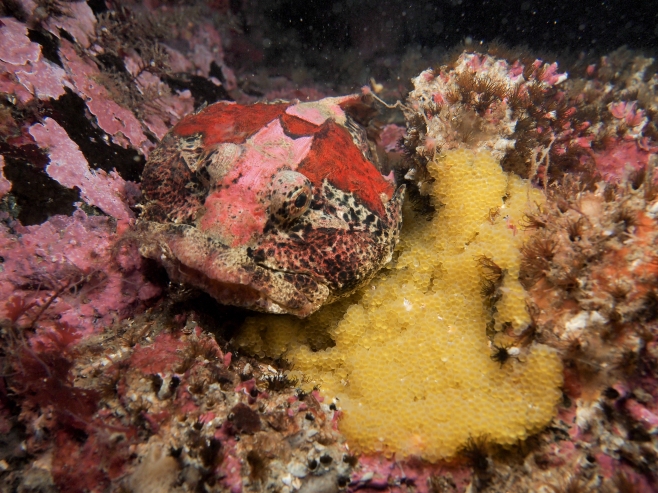
Range: Monterey California to Kodiak Island, Gulf of Alaska. Most often found to a depth of 20 m but have been found to 227 m.
Spawn: February and March.
Sources: Kent, Daniel & Fisher, John & Marliave, Jeffrey. (2011). Interspecific nesting in marine fishes: Spawning of the spinynose sculpin, Asemichthys taylori, on the eggs of the buffalo sculpin, Enophrys bison. Ichthyological Research – ICHTHYOL RES. 58. 10.1007/s10228-011-0223-5.
Whoa! Photo below is of one male Buffalo Sculpin guarding the egg masses of at least 3 different females.
©Jackie Hildering.
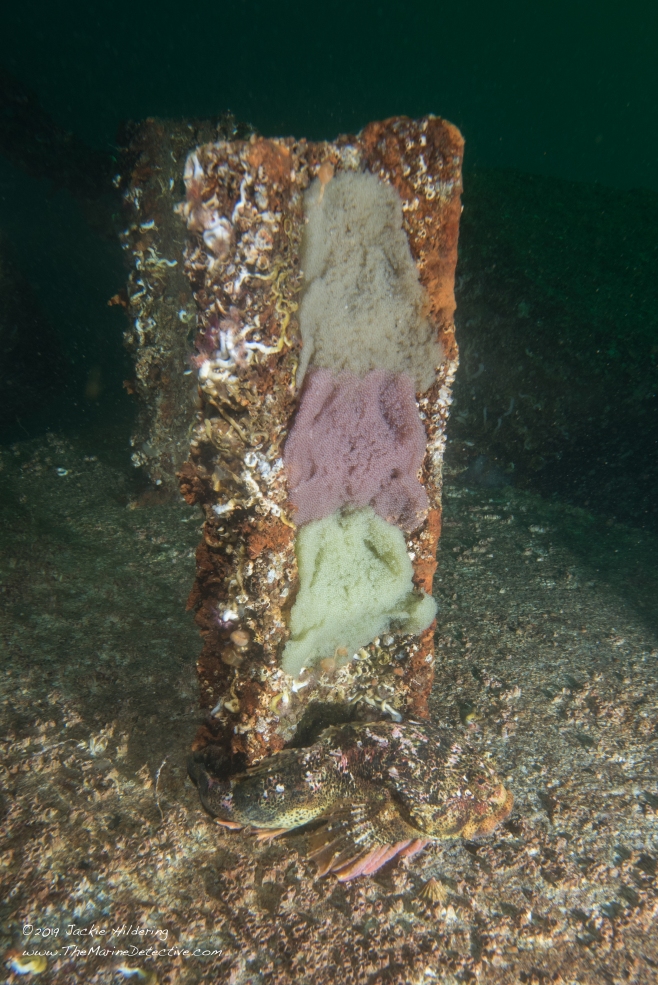
And here’s a male appearing to guard EIGHT egg masses. 
The following photos of male Buffalo Sculpins guarding eggs are intended to show how varied both the colouration of the fish and the eggs can be. All photos ©Jackie Hildering.

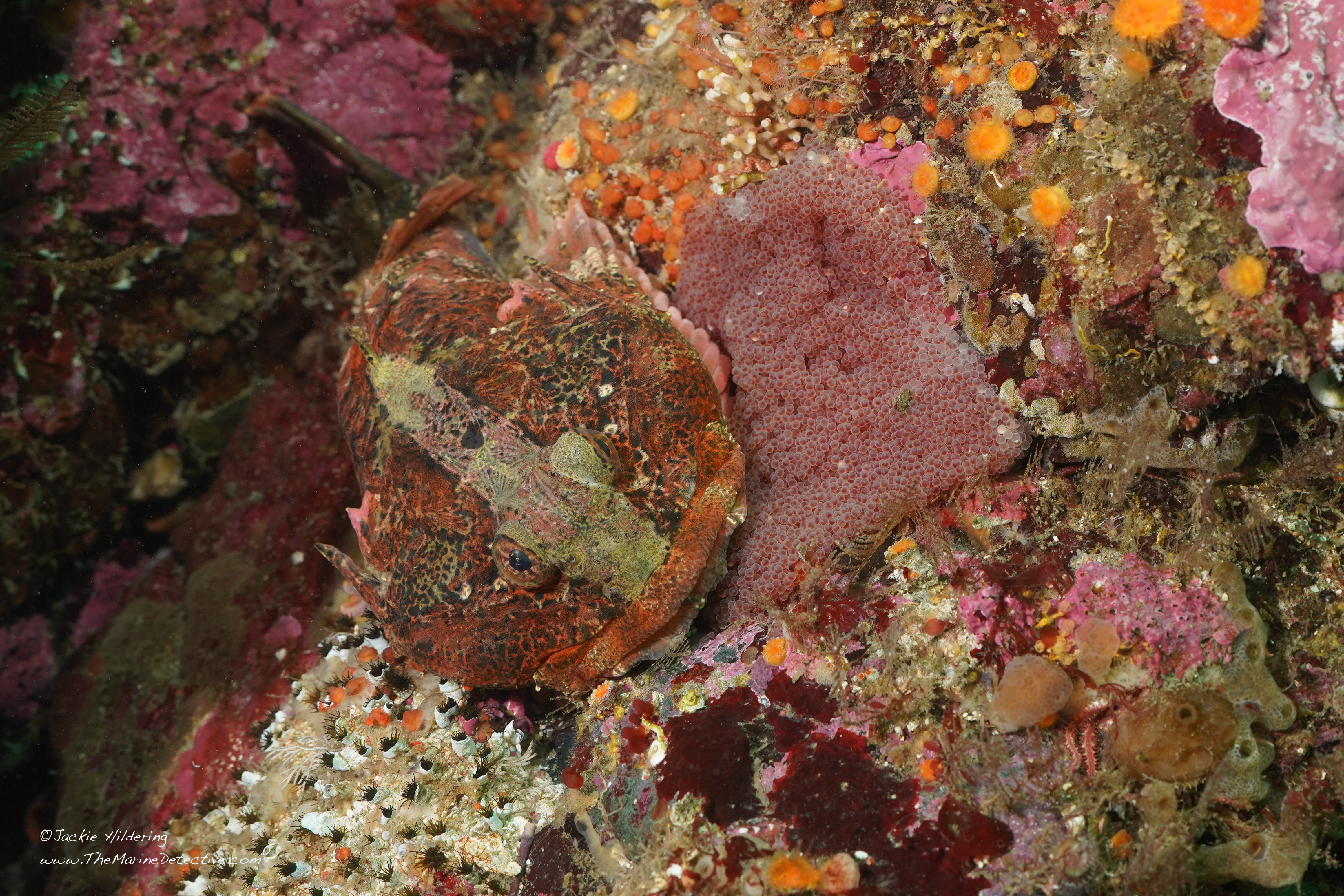

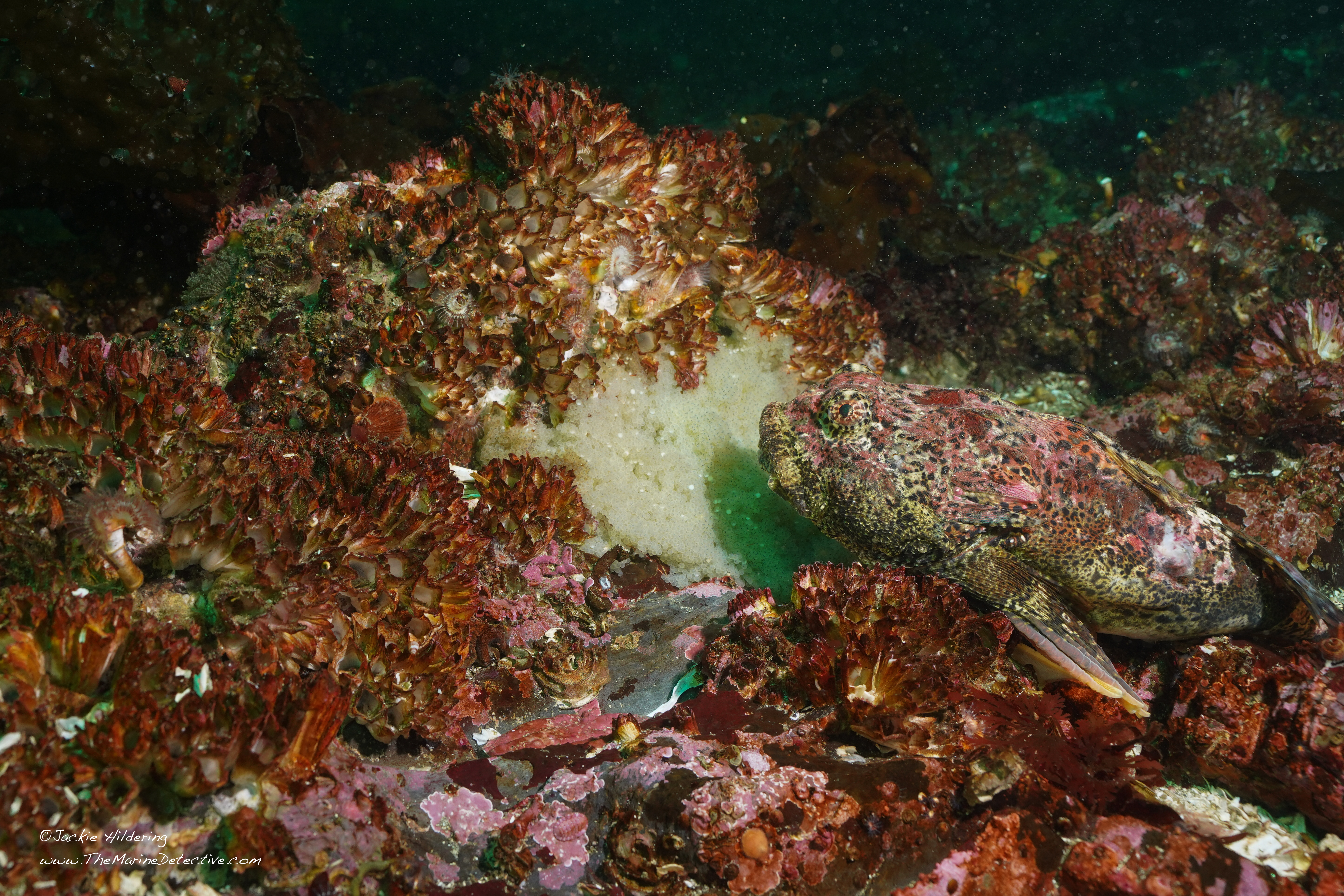
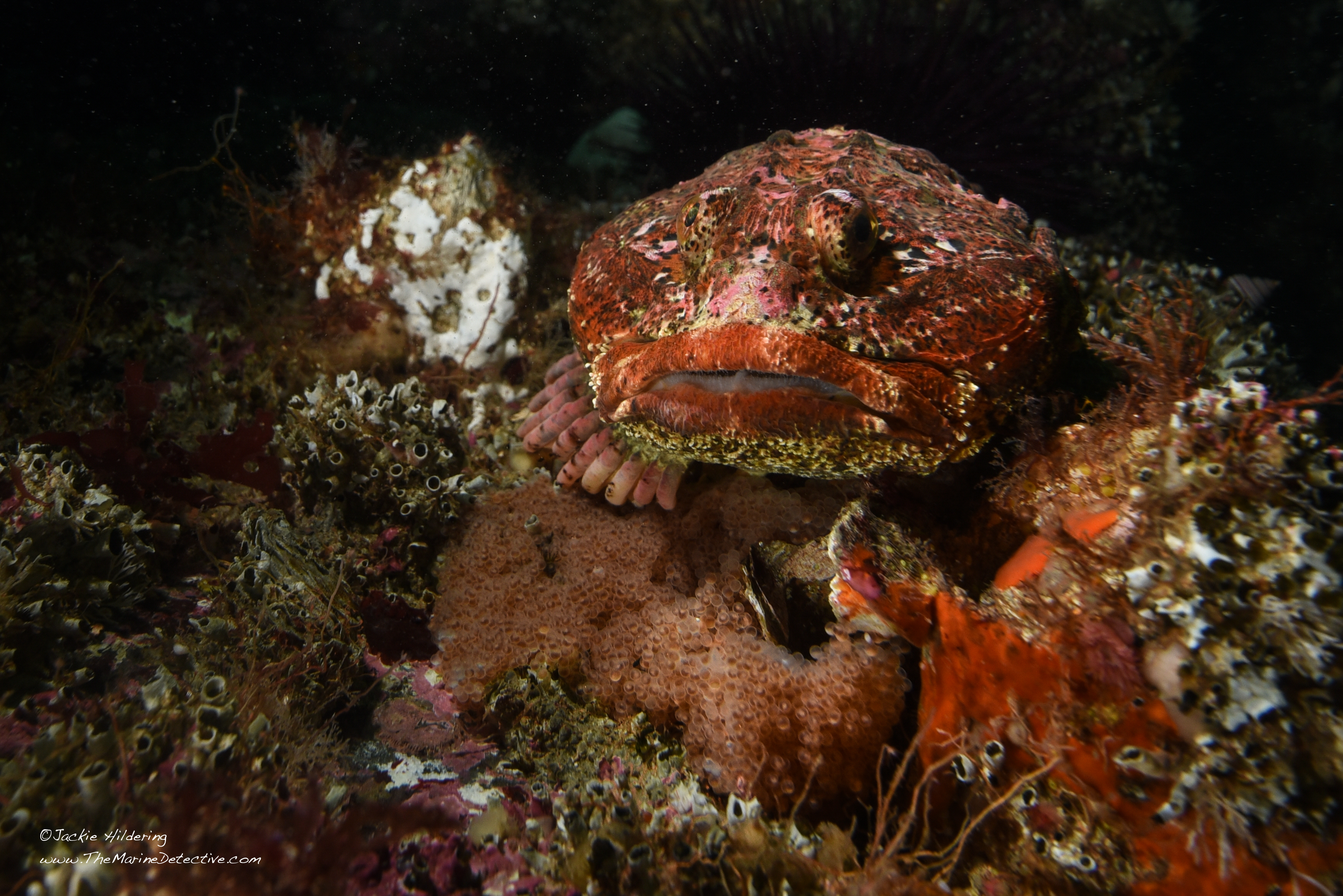
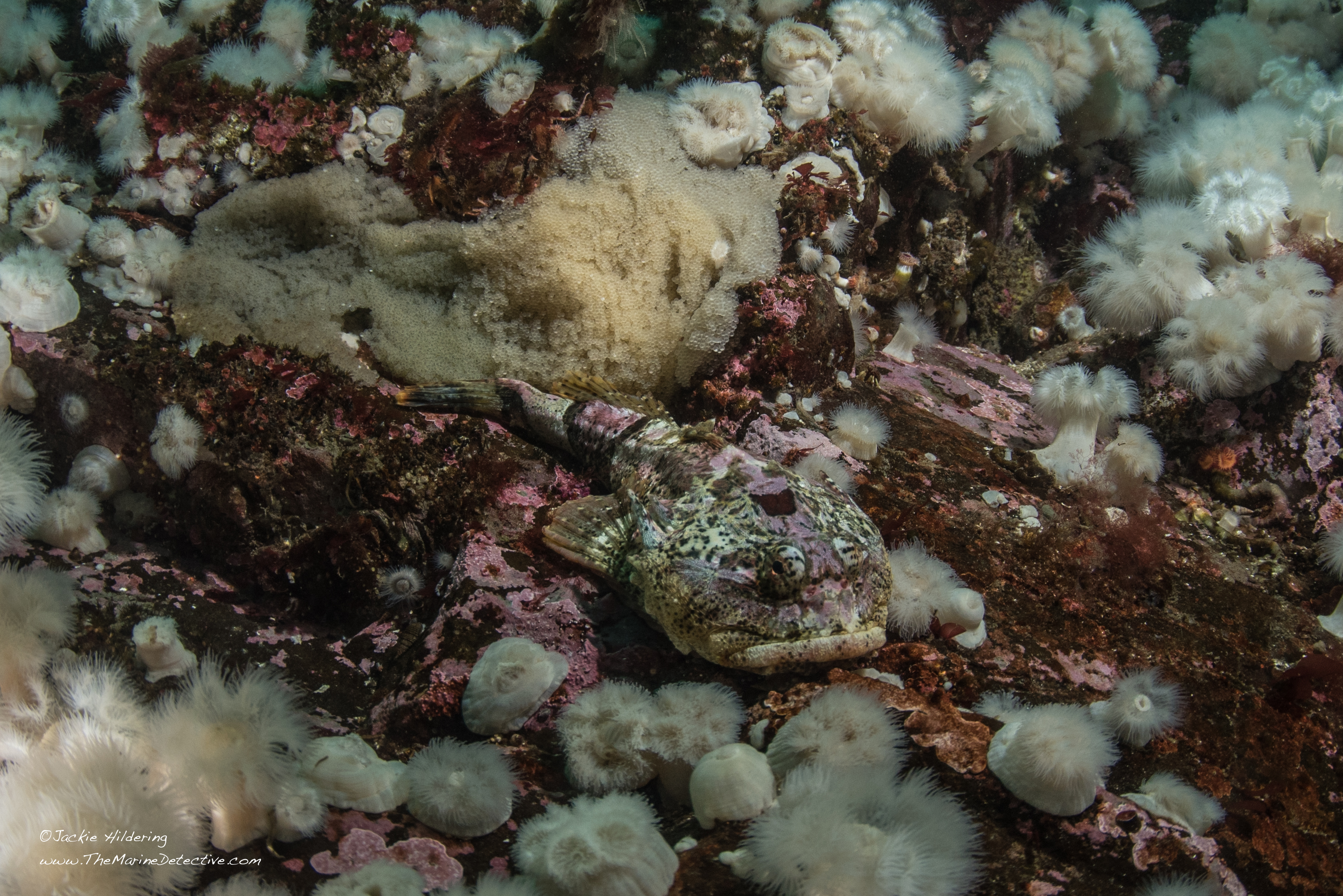
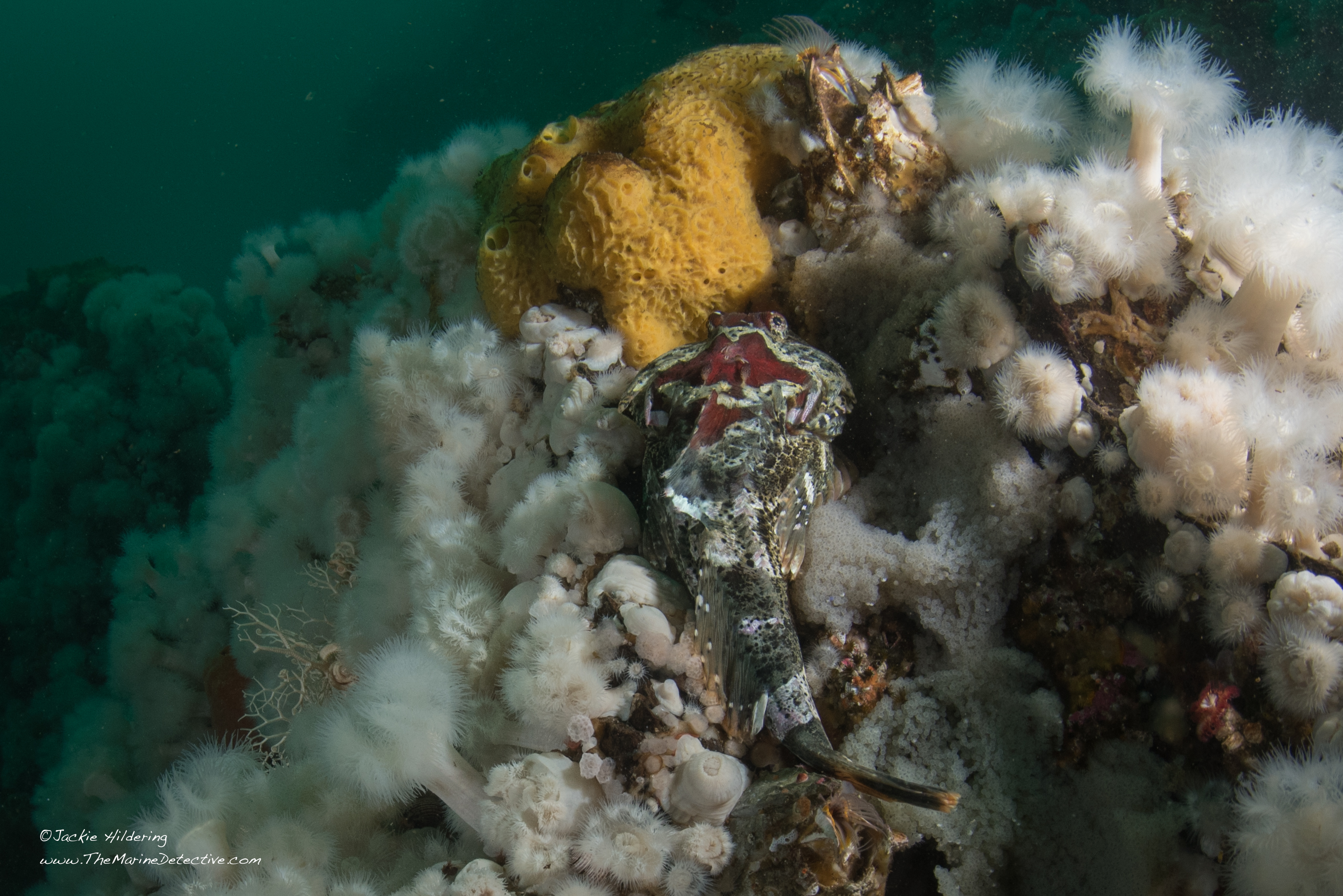
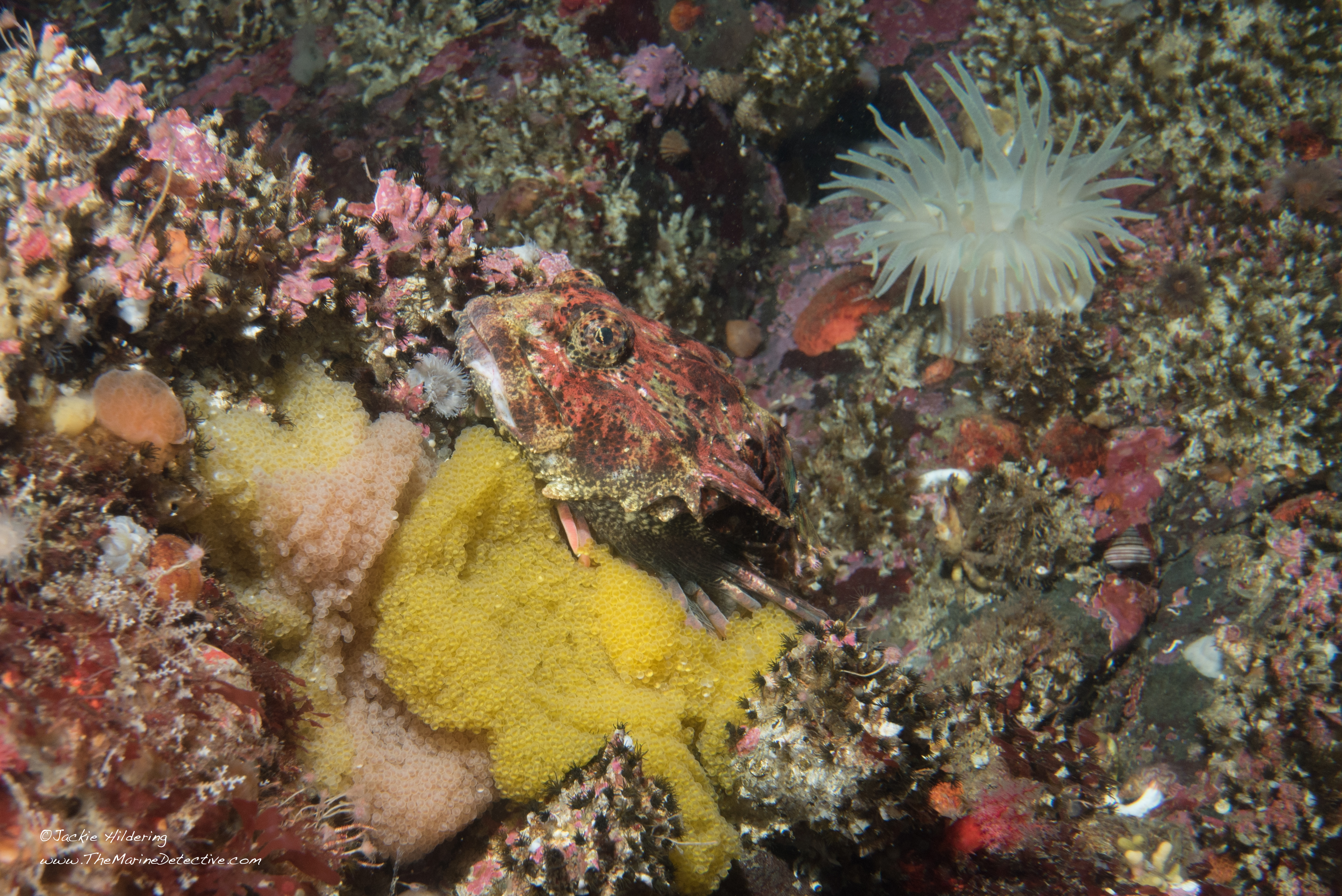

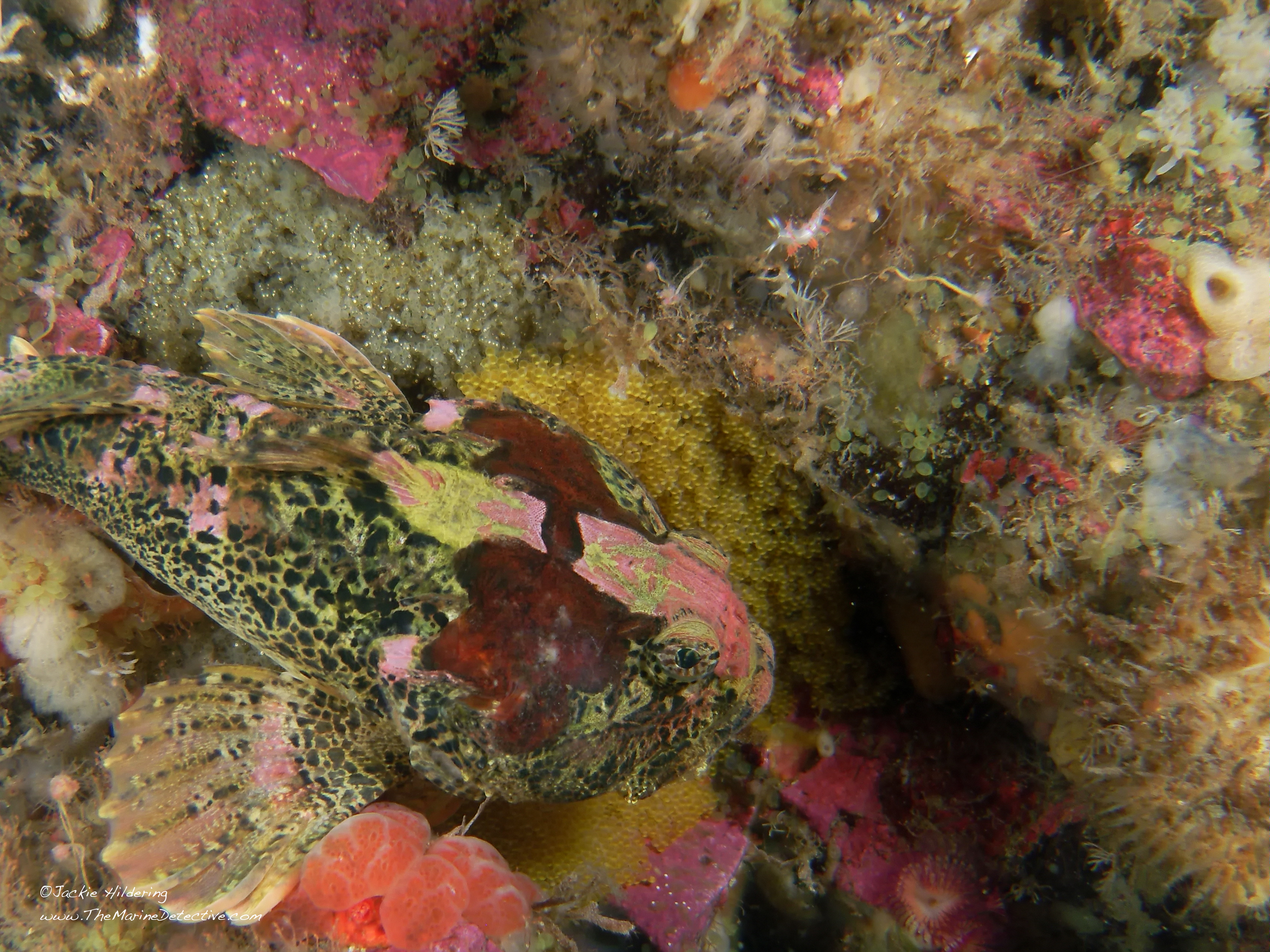
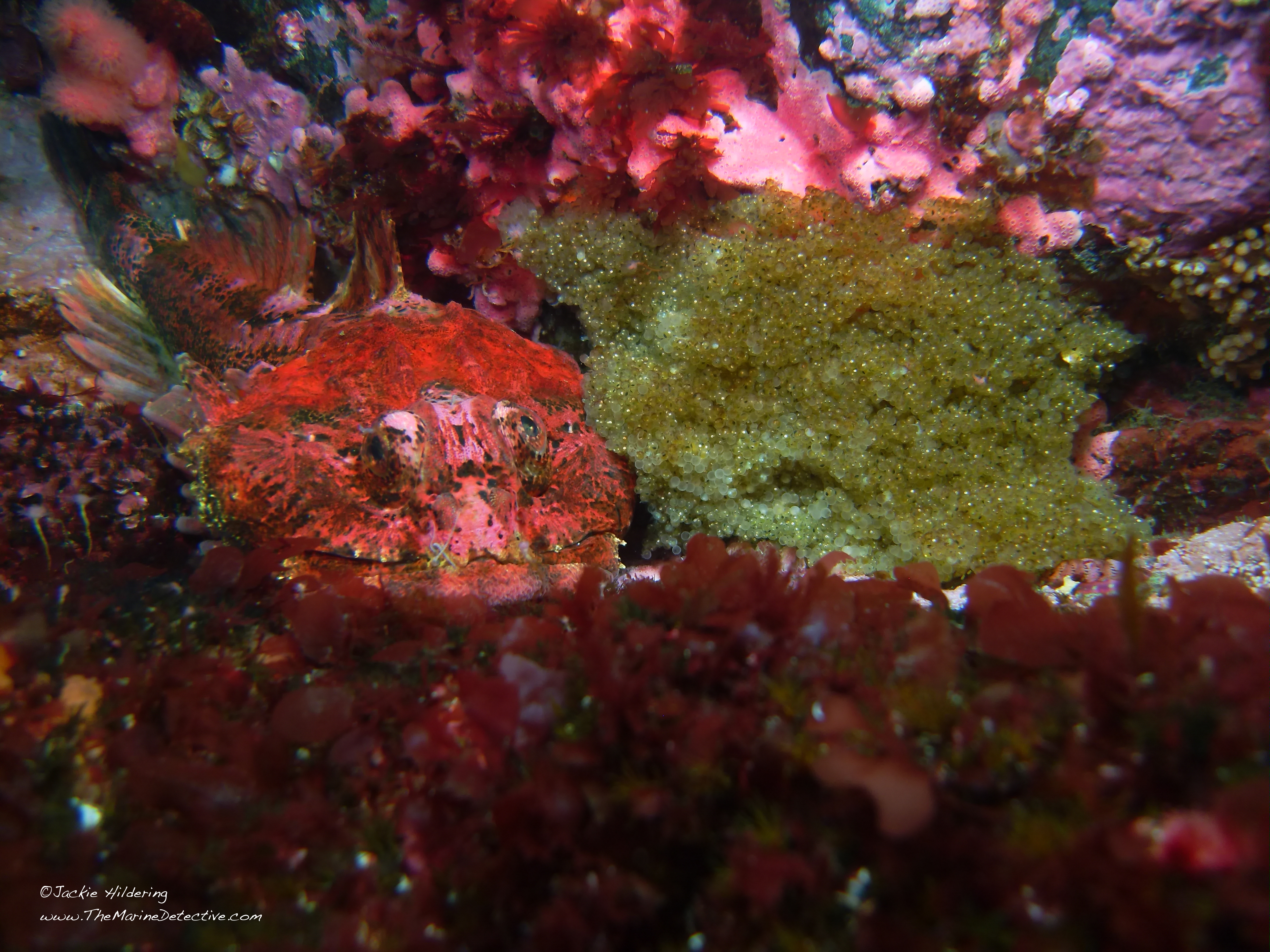
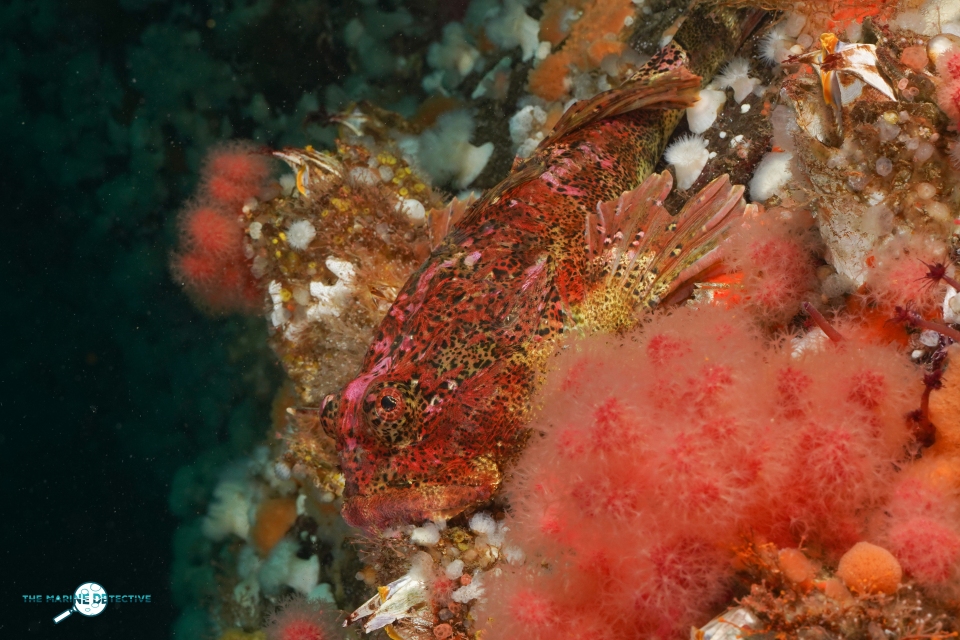
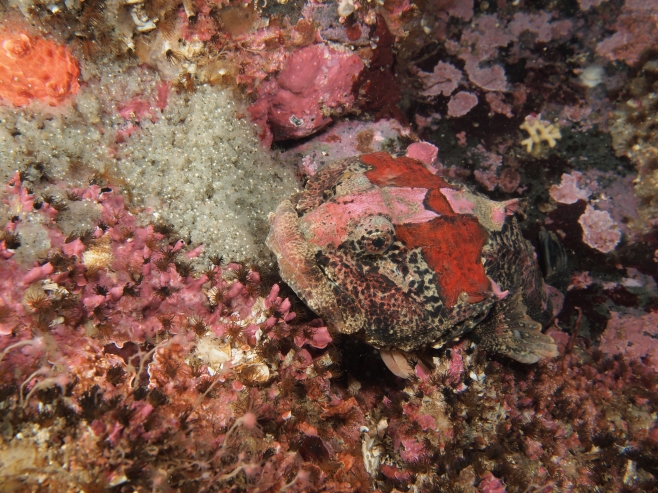
8 Responses to “Buffalos Mating . . . Underwater!”
Amazing pictures Jackie, they are incredibly beautiful! Fish daddy’s are amazing creatures.
Great write up and as always Great PICS!!
Nature never ceases to amaze me!! Thank you Jackie for transporting me underwater with you!
Wonderful pictures Jackie! Camouflaged sculpins are a favourite of mine (one of many!) while diving. Such a treat to get a glimpse of the next generation!
Great job describing this species.
Thank you so much for the feedback Don.
Incredible photos! Thanks for the infinite education….
Value the feedback so much Marilyn.